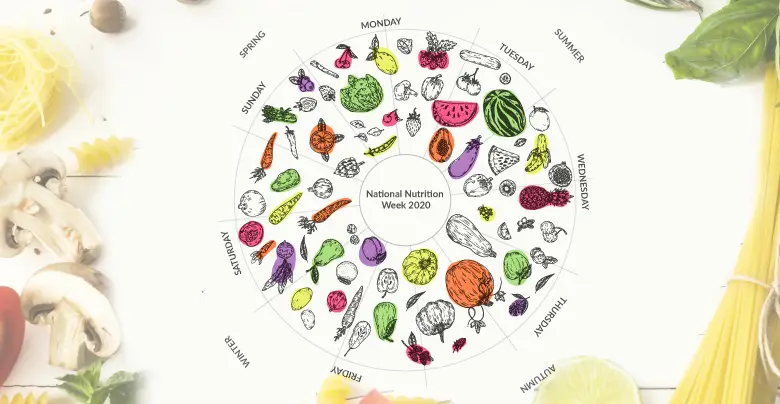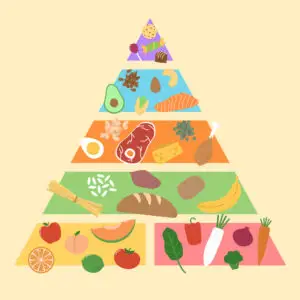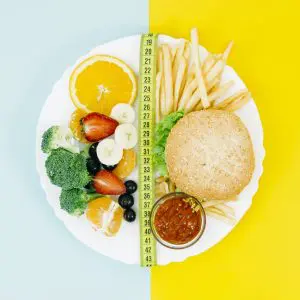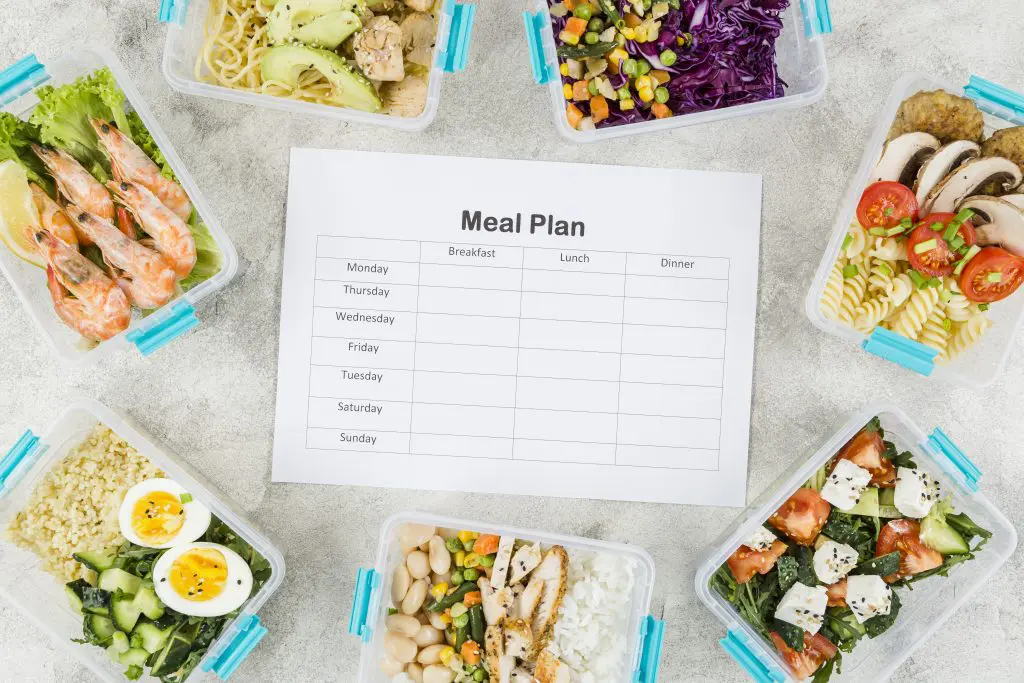National Nutrition Week 2020: All You Need To Know About A Healthy Diet

September marks the beginning of the National Nutrition Week 2020 and will be observed between the 1st and 7th of this month. Each year, the National Nutrition Week is based on a unique theme, and 2020, despite all the traumatizing events, it is no exception! The theme for the National Nutrition Week 2020 is based on addressing the importance of healthy eating practices and nutritional needs.
So, to celebrate the week nutritiously, here’s all you need to know about nutrition, malnutrition, undernourishment, and more.
Definition & Meaning
According to the Oxford dictionary, nutrition means “the process of taking in and absorbing nutrients.” Simply put, nutrition is a process to give all the necessary nutrients to your body. Therefore, to understand nutrition, one must understand the meaning and importance of nutrients. A nutrient is a substance essential for the growth and sustenance of life!

Everything that we consider food, or edible, largely contains any of the six major nutrients which are essential for a human body to exist – carbohydrates, fats, proteins, vitamins, minerals, and water. For a human being to have optimum health, a balance of these nutrients is necessary, and fluctuations in nutritious balance leads to various ailments.
In fact, the Father of Medicine, Hippocrates famously stated, “Let food be thy medicine, and medicine be thy food.” This shows the right food can be a prevention as well as a cure for several diseases. Unfortunately, despite being such a critical subject, there’s a serious void of conversation and discussion about nutrition in the public domain.
While in developing and under developing nations talk on nutrition is almost non-existent due to the focus being on eliminating poverty and building infrastructure, most of the developed world is contaminated with an overwhelming proliferation of packaged foods. Thus, nutrition is ignored beyond social and economic barriers.
Nutrition in India, or Rather the Lack of It!
 India is a great country with diverse cultures and a rich heritage. It’s also one of the most malnourished countries in the world. For instance, a third of all the malnourished children in the world live in India. While 72% of infants in India suffer from anaemia, 44% of children under five years of age are underweight, greater than the percentage of malnourished children in the sub-Saharan deserts of Africa.
India is a great country with diverse cultures and a rich heritage. It’s also one of the most malnourished countries in the world. For instance, a third of all the malnourished children in the world live in India. While 72% of infants in India suffer from anaemia, 44% of children under five years of age are underweight, greater than the percentage of malnourished children in the sub-Saharan deserts of Africa.
About 40% women in rural areas and 36% women in urban regions suffer from mild anaemia. What’s more concerning is that about 70% of the individuals in Jharkhand, Uttar Pradesh, Bihar, Chhattisgarh, Andhra Pradesh, Karnataka, Haryana, and Madhya Pradesh have been found to be anaemic.
Taking into account our humongous population, the percentages posted above may be more than the entire population of several countries! Moreover, Indian ranks 102nd out of 117 countries in the Global Hunger Index, putting us behind our neighbours like Sri Lank (66th), Pakistan (94th), and Nepal (73rd), making hunger a “serious situation”.
Expectedly, inequality in income distribution is one of the major reasons for malnutrition, but it doesn’t end there. Those who have access to food also have insufficient nutrients in their body. Nobel Laureate for Economics, Angus Deaton says that malnutrition in India not only because of low calorie intake, but also because of the Indian people’s carbohydrate-intensive diet patterns, with lack of sufficient content of protein and fat.
Other than malnourishment, over-nourishment is also an increasingly growing problem in the country. More than 18% men and 14% women in India are obese, and in some urban areas, the numbers have gone upwards of 40%. All of these indicate that you either don’t have access to sufficient nutrients, which is the case for most people in this country, or you eat too much and are obese.
What is Good & Sufficient Nutrition
While there may be socioeconomic reasons for the growing imbalance of nutrition, a big reason could also be the general lack of awareness about nutrition. So, let’s discuss the sufficient nutrition one can find in common foods, recommended by the World Health Organization.
 The WHO says that a healthy diet must include fruit, vegetables, legumes, whole grains, and nuts. It further states that an adult must consume at least 400gms of fruits and vegetables each day, excluding potatoes, sweet potatoes, and starchy roots. Less the 10% of the total intake must be from added sugars, while less than 30% must be from fats.
The WHO says that a healthy diet must include fruit, vegetables, legumes, whole grains, and nuts. It further states that an adult must consume at least 400gms of fruits and vegetables each day, excluding potatoes, sweet potatoes, and starchy roots. Less the 10% of the total intake must be from added sugars, while less than 30% must be from fats.
For carnivores, the WHO recommends fish over red meat, as the former has unsaturated (healthy) fats, while the latter contains saturated (harmful) fats. Other sources of unsaturated fats include avocado, soybean, olives, and nuts. While saturated fats should be less than 10% on your intake, trans fat, found in packaged and preserved foods, fries, biscuits, etc., must not exceed 1%.
Saturated and trans fats create serious health issues, least dangerous of which is obesity, while also making your heart extremely vulnerable. So, next time you have a craving for that extra-cheese pizza, think about trans fats and how sick they can make you.
Another important, and probably most neglected point, is the daily salt consumption. An adult must consume less than 5 gms of iodized salt per day, and not more than that. Excessive consumption of salt on a regular basis can cause fluctuations in blood pressure, which, if ignored, can be fatal.
Plan Your Meal for Maximum Results
One of the most important aspects of leading a nutritious life is by taking extra care in preparing your meal plan, not just in terms of nutritive value but also in terms of timing. Nutritionists and health trainers worldwide hugely emphasize how important it is to break down your daily calorie consumption into small portions and spread it across the day.
Small meals at short intervals allows the body to digest and absorb maximum nutrients from the food we consume, rather having heavy meals with long intervals in between. Each of the meals must be nutrient rich, planned accordingly for optimum nutritious value.
 Another important practice for an effective meal plan is to cook your food fresh rather than using canned or packaged food. Packaged food contains a high amount of preservatives to increase their shelf life. This not only kills the nutritious value of the food, but also makes the consumer vulnerable to cancer, as some preservatives have been proved to carry carcinogens.
Another important practice for an effective meal plan is to cook your food fresh rather than using canned or packaged food. Packaged food contains a high amount of preservatives to increase their shelf life. This not only kills the nutritious value of the food, but also makes the consumer vulnerable to cancer, as some preservatives have been proved to carry carcinogens.
To plan your meal, get yourself familiar with your body requirement by calculating your BMI and then deciding on the number of calories you need. Subsequently, consult a nutritionist and get a diet chart ready. There’s nothing in this world that’s more precious for you than your health, and therefore, investing in getting your meals right is worth every penny you pay, and some more.
So, this National Nutrition Week 2020, make a promise to yourself to become the best version of yourself, ensure minimum wastage of food, and to help as many impoverished children as you can. May the force be with you!



